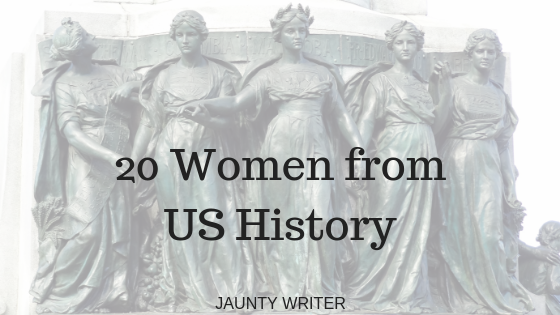It is impossible to sum up the women from US history in simple lists. So this will probably end up being an ongoing project, as I find more women to add to my ever-growing list of awesome people.
Susan La Flesche

Susan La Flesche was born of the Omaha Nation and became the first female Native American doctor. She worked tirelessly to see to the health of the men and women in her care, serving more than 1,300 people in 450 square miles.
She also served as a bridge between her Omaha Nation and the white-Americans she was educated by, although she never abandoned her native roots.
Her tombstone reads “Until the Day Dawns.”
Hedy Lamarr

Hedy Lamarr was an Austrian-American actress, best known as a bombshell during her time on the big screen. An intelligent woman, her intelligence often was overlooked when she grew into her looks. Lamarr became a US citizen in 1953 and supporter her country.
Today, she is also recognized as the “Mother of WiFi” due to a patent for a wireless transmitter during WWII. It has been the basis of wireless programs like GPS and Bluetooth.
Victoria Woodhull

Victoria Woodhull was one of 10 children and had a colorful life. She spent time as a clairvoyant, was an advocate for free love, and was deeply involved in the Women’s Rights Movement.
Perhaps most notable, Woodhull was the first woman to run for President. She named Frederick Douglass as her running mate, although he never commented on it. No one knows how many votes she received since it appears the votes were never counted.
Marian Anderson

Marian Anderson was a famous singer and the first African American singer to perform at the Metropolitan Opera in New York City.
Anderson’s most notable performance is often credited to her 1939 performance at the Lincoln Memorial, at the behest of Eleanor Roosevelt. She’d been scheduled to perform at Constitution Hall in Washington DC. The Daughters of the American Revolution blocked her scheduling due to the color of her skin.
Barbara McClintock

Barbara McClintock loved science from a young age. Her work as a geneticist focused on corn, although her work was able to be transferred from the plant to human genetics.
She discovered jumping genes, which are DNA sequences that move between the genome. While originally considered junk science, in 1983, she was awarded the Nobel Prize in Medicine.
McClintock also started work into epigenetics, where genes alter due to external factors, almost 40 years before formally studied.
Bessie Coleman

Bessie Coleman was born in Texas, soon joining her parents in the cotton fields. However, her eyes were constantly up towards the skies.
She was denied flight school in the US due to her race and gender, causing her to pursue her dreams in France. She became the first African American in the world to earn her pilots license.
Returning to the US, she spent her time performing aerial stunts. She refused to perform unless it was to a desegregated crowd.
Belle Starr

Belle Starr has been called “Queen of the Bandits” due to her association with many western criminals throughout her life. While her connection to criminals is clear, her involvement in criminal activities is a little murkier.
Starr was convicted of horse theft along with her husband, Sam, and her notoriety grew. Some scholars believe she stepped back from crime. Her life ended violently, murdered by one of the many enemies she made during her life.
Anne Royall
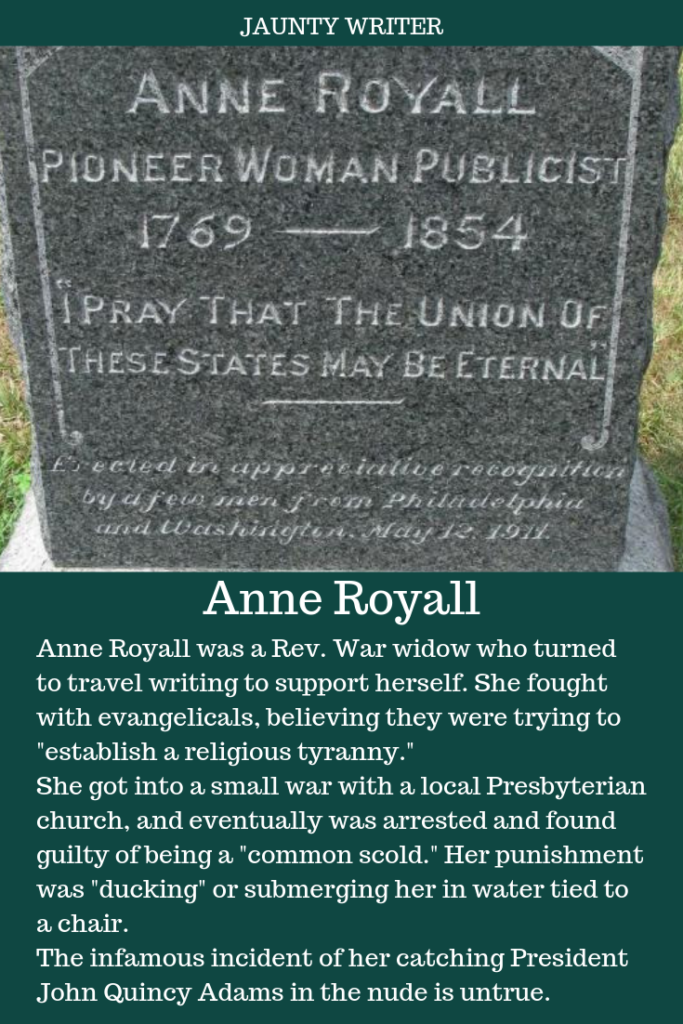
Anne Royall was a Rev. War widow who turned to travel writing to support herself. She fought with evangelicals, believing they were trying to “establish a religious tyranny.”
She got into a small war with a local Presbyterian church, and eventually was arrested and found guilty of being a “common scold.” Her punishment was “ducking” or submerging her in water tied to a chair.
The infamous incident of her catching President John Quincy Adams in the nude is untrue.
Katie Sandwina

Katie Sandwina was an Austrian born strong woman, often considered the strongest woman in the world. She performed feats of strength and wrestling from a young age as part of her parent’s circus performance, until her death at age 67.
Sandwina’s last name came from the time she defeated the World’s Strongest Man, Eugene Sandow in a weight lifting competition. Her husband, who she also beat in a wrestling match, also took the surname.
She never lost a wrestling match in her life.
Elizabeth Jennings Graham
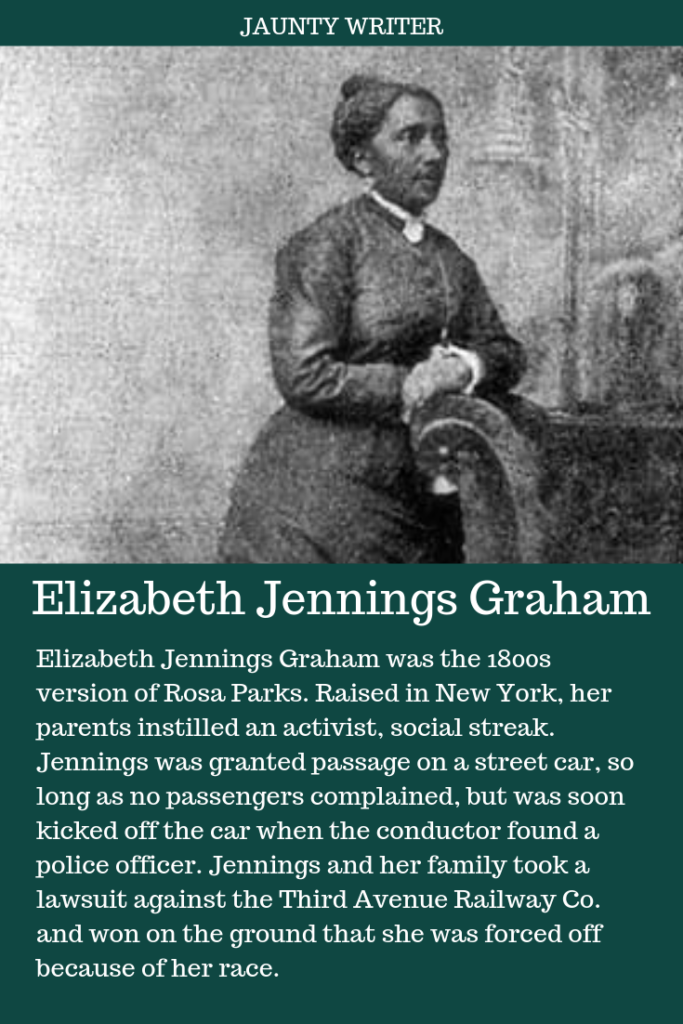
Elizabeth Jennings Graham was the 1800s version of Rosa Parks. Raised in New York, her parents instilled an activist, social streak.
Jennings was granted passage on a street car, so long as no passengers complained, but was soon kicked off the car when the conductor found a police officer. Jennings and her family took a lawsuit against the Third Avenue Railway Co. and won on the ground that she was forced off because of her race.
Ida B. Wells-Barnett

Ida B. Wells was a journalist, activist, and researcher. A majority of her writings were focused on the lynching of black men throughout the south and into the supposedly progressive northern states.
Wells was also an outspoken women’s rights advocate. She pushed back against white suffragists for ignoring black women in their request for equal rights, including touring internationally as an advocate.
Cassie Chadwick
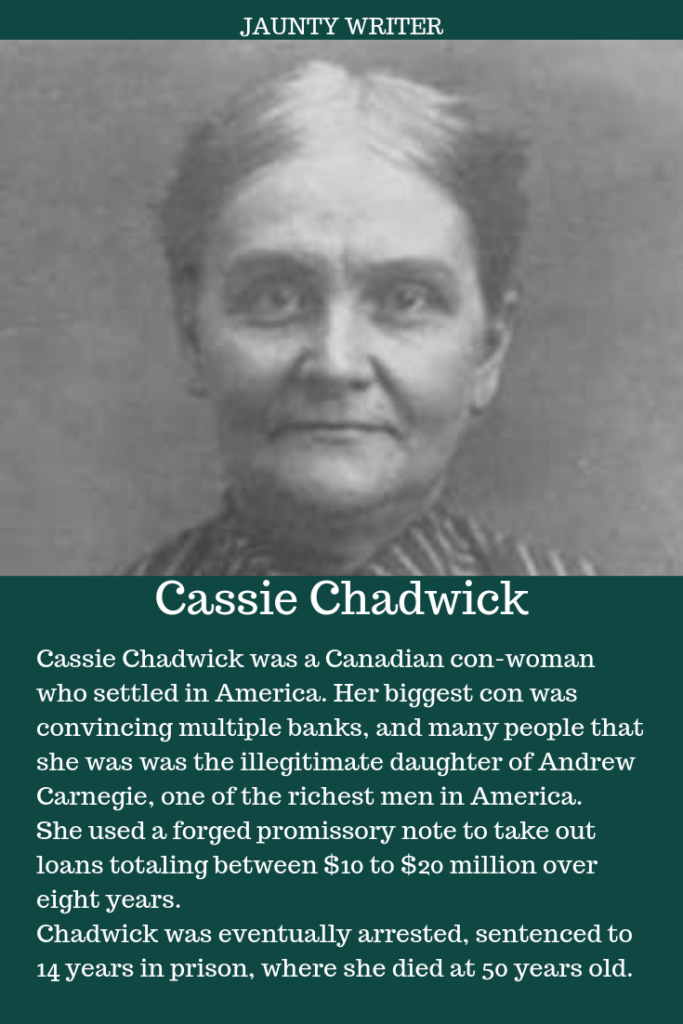
Cassie Chadwick was a Canadian con-woman who settled in America. Her biggest con was convincing multiple banks, and many people that she was was the illegitimate daughter of Andrew Carnegie, one of the richest men in America.
She used a forged promissory note to take out loans totaling between $10 to $20 million over eight years.
Chadwick was eventually arrested, sentenced to 14 years in prison, where she died at 50 years old.
Phyllis Wheatley
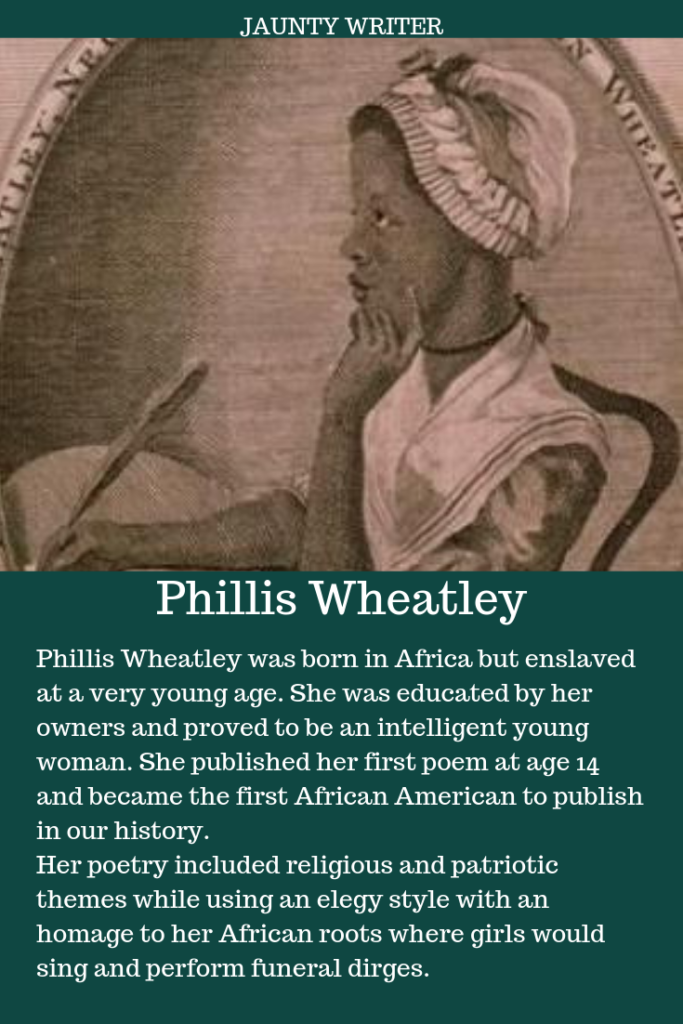
Phillis Wheatley was born in Africa but enslaved at a very young age. She was educated by her owners and proved to be an intelligent young woman. She published her first poem at age 14 and became the first African American to publish in our history.
Her poetry included religious and patriotic themes while using an elegy style with an homage to her African roots where girls would sing and perform funeral dirges.
Gertrude Stein
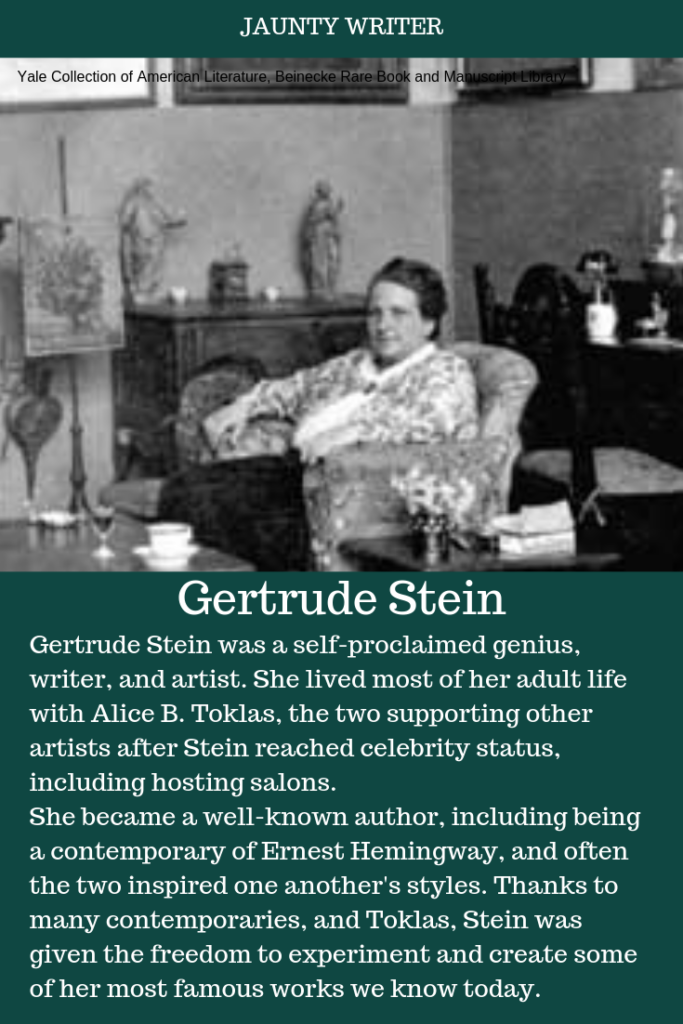
Gertrude Stein was a self-proclaimed genius, writer, and artist. She lived most of her adult life with Alice B. Toklas, the two supporting other artists after Stein reached celebrity status, including hosting salons.
She became a well-known author, including being a contemporary of Ernest Hemingway, and often the two inspired one another’s styles. Thanks to many contemporaries, and Toklas, Stein was given the freedom to experiment and create some of her most famous works we know today.
Mary Breckinridge

Mary Breckinridge was a pioneer in frontier medicine, nursing, and midwifery. She helped bring nursing and medicine to many rural communities.
Considered one of her most important contributions was Kentucky’s frontier Pioneer Nursing Service. Nurses would ride throughout the frontier on horseback, bringing much needed medical knowledge and skills to families who wouldn’t have had access without them.
Mamie Till-Mobley
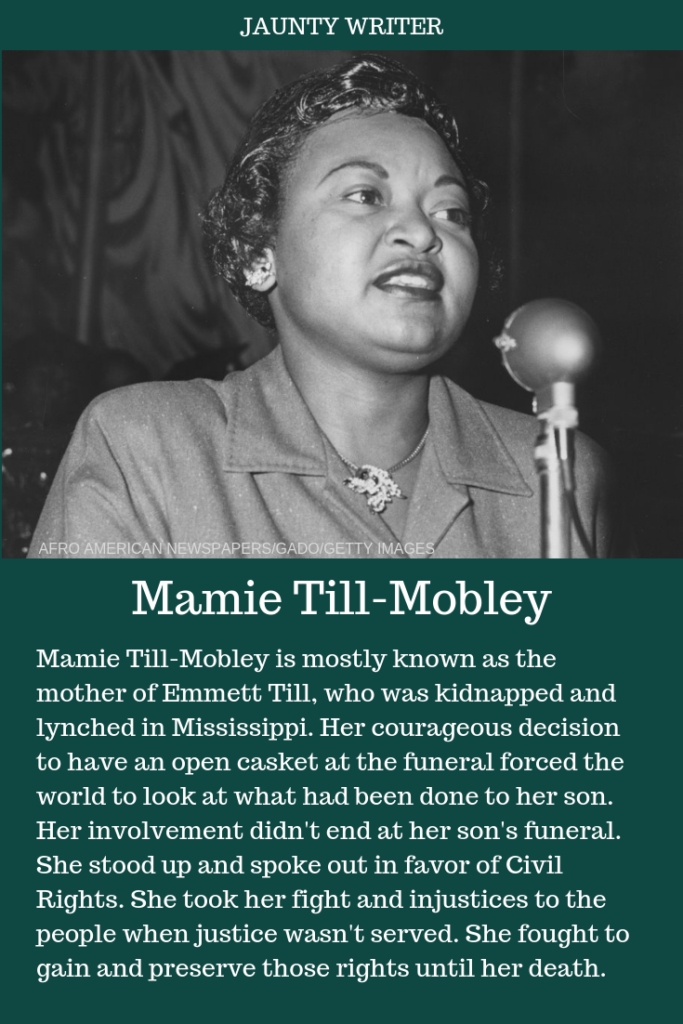
Mamie Till-Mobley is mostly known as the mother of Emmett Till, who was kidnapped and lynched in Mississippi. Her courageous decision to have an open casket at the funeral forced the world to look at what had been done to her son.
Her involvement didn’t end at her son’s funeral. She stood up and spoke out in favor of Civil Rights. She took her fight and injustices to the people when justice wasn’t served. She fought to gain and preserve those rights until her death.
Carry A. Nation
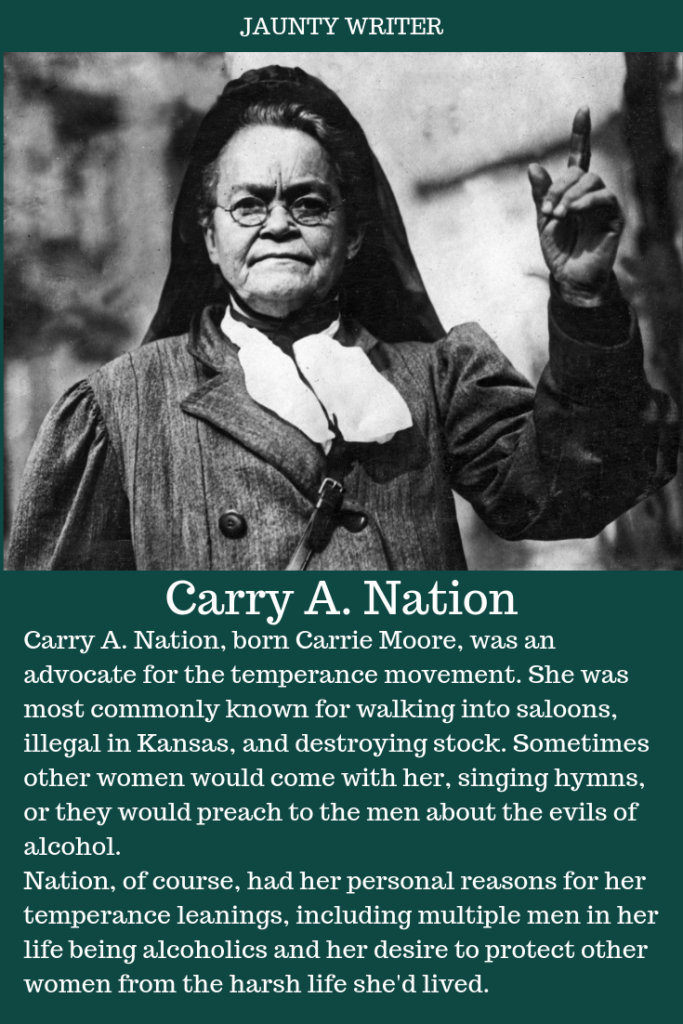
Carry A. Nation, born Carrie Moore, was an advocate for the temperance movement. She was most commonly known for walking into saloons, illegal in Kansas, and destroying stock. Sometimes other women would come with her, singing hymns, or they would preach to the men about the evils of alcohol.
Nation, of course, had her personal reasons for her temperance leanings, including multiple men in her life being alcoholics and her desire to protect other women from the harsh life she’d lived.
Edmonia Lewis
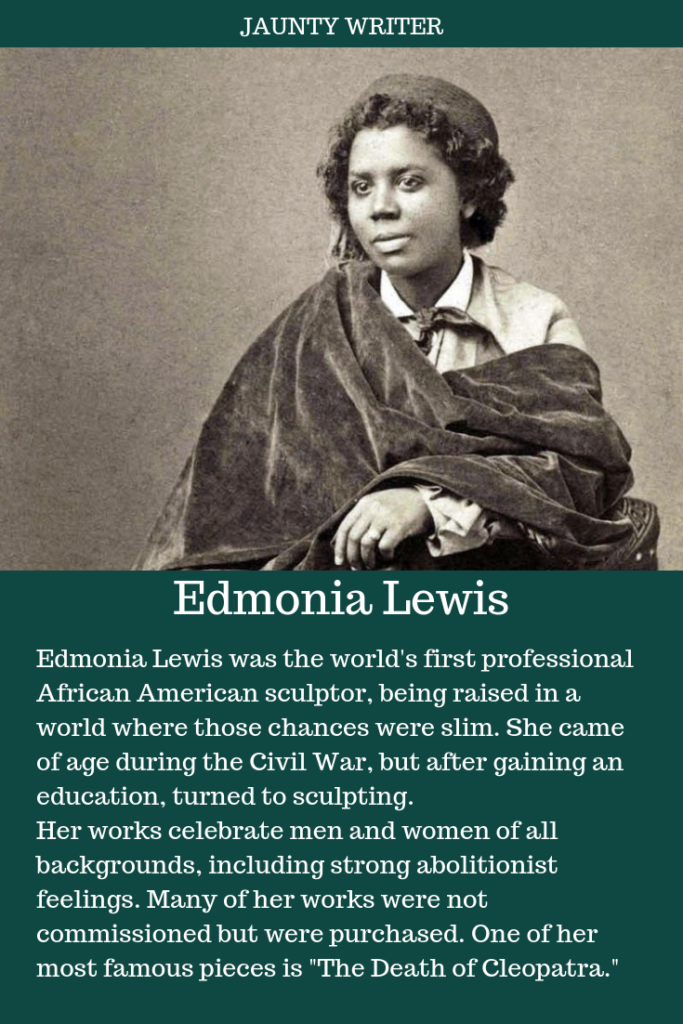
Edmonia Lewis was the world’s first professional African American sculptor, being raised in a world where those chances were slim. She came of age during the Civil War, but after gaining an education, turned to sculpting.
Her works celebrate men and women of all backgrounds, including strong abolitionist feelings. Many of her works were not commissioned but were purchased. One of her most famous pieces is “The Death of Cleopatra.”
Belinda Sutton
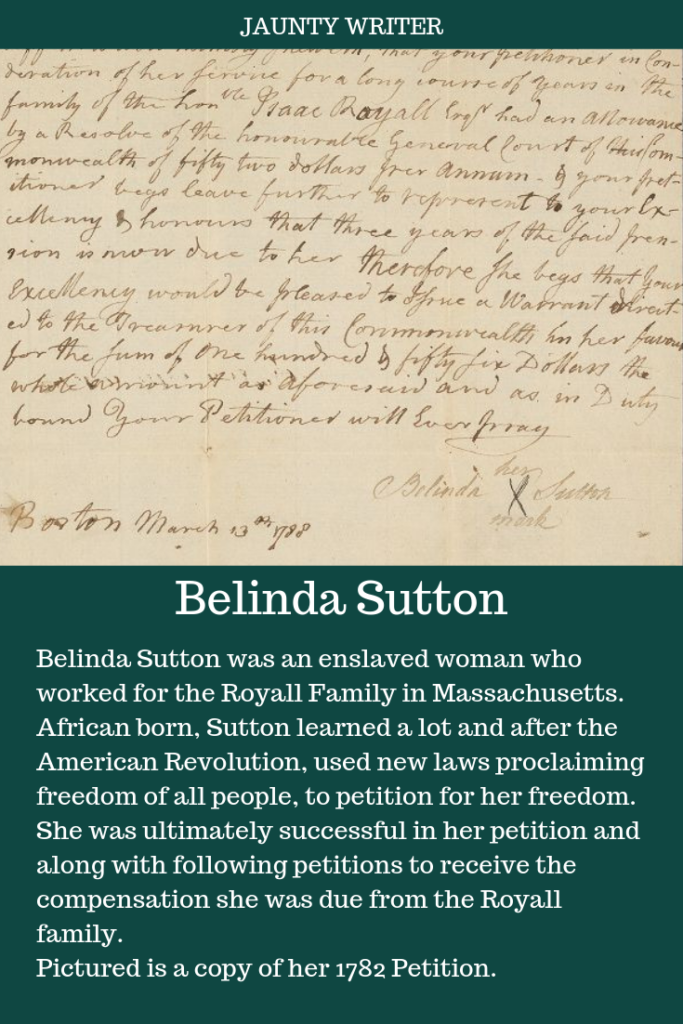
Belinda Sutton was an enslaved woman who worked for the Royall Family in Massachusetts. African born, Sutton learned a lot and after the American Revolution, used new laws proclaiming freedom of all people, to petition for her freedom.
She was ultimately successful in her petition and along with following petitions to receive the compensation she was due from the Royall family.
Pictured is a copy of her 1782 Petition.
Martha Ballard
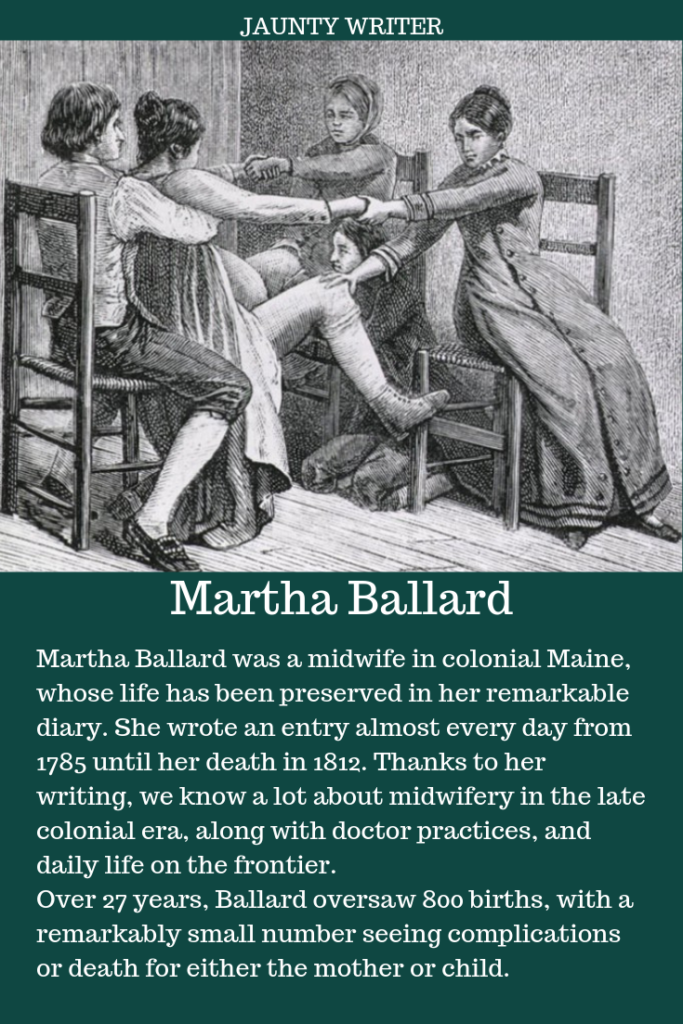
Martha Ballard was a midwife in colonial Maine, whose life has been preserved in her remarkable diary. She wrote an entry almost every day from 1785 until her death in 1812. Thanks to her writing, we know a lot about midwifery in the late colonial era, along with doctor practices, and daily life on the frontier.
Over 27 years, Ballard oversaw 800 births, with a remarkably small number seeing complications or death for either the mother or child.
